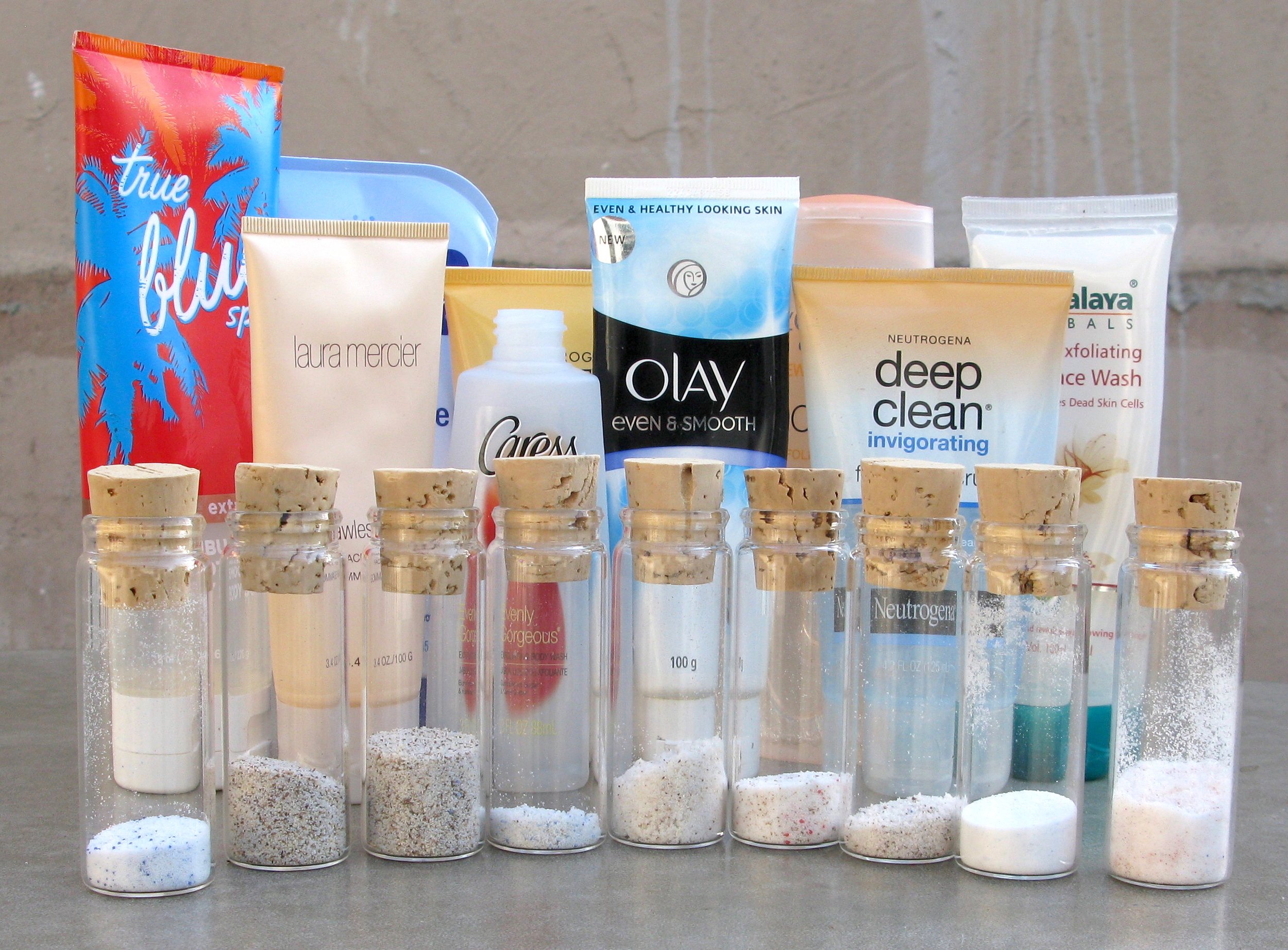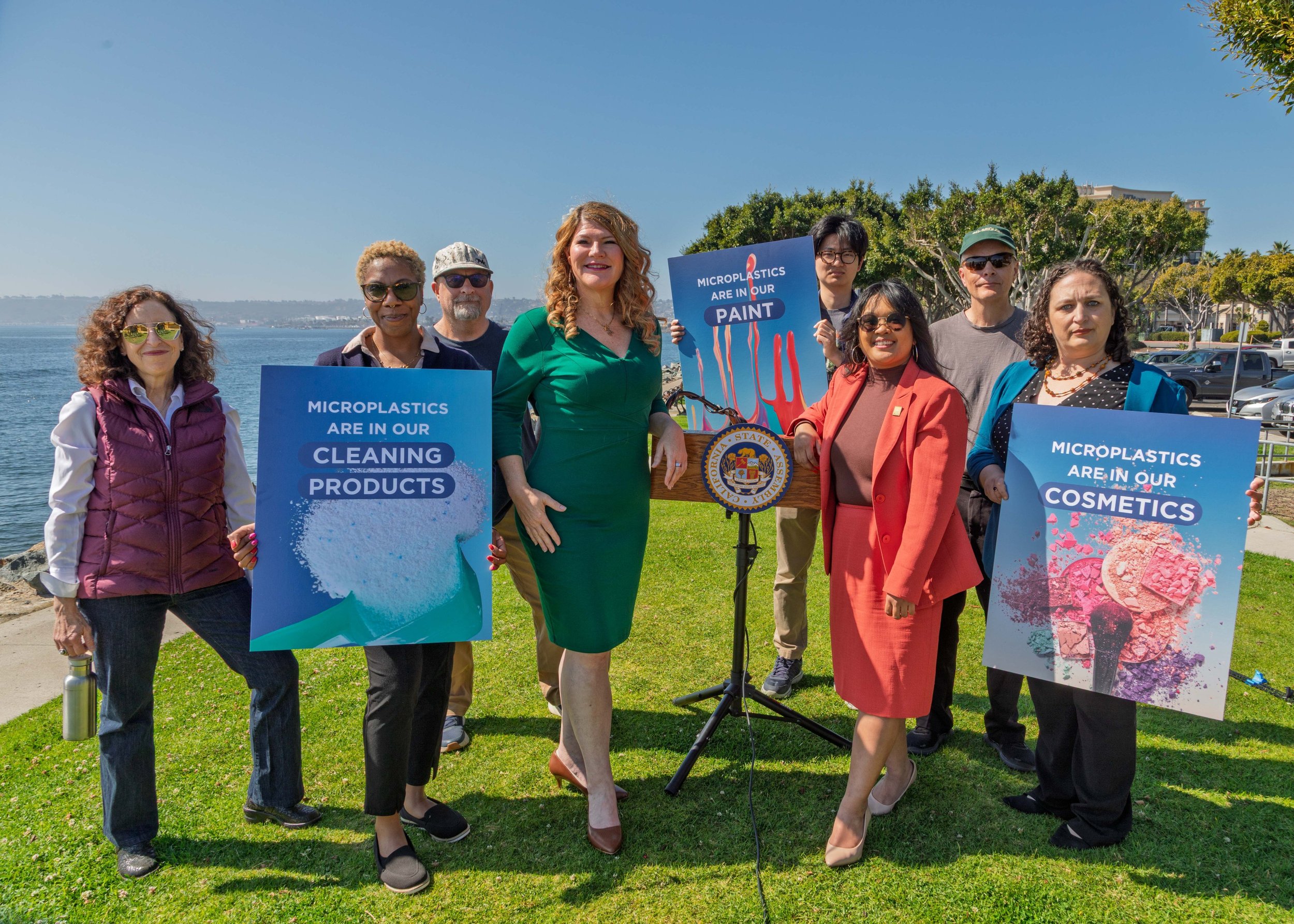The Hidden Microplastics in our Homes: Microbeads
Over a decade ago, 5 Gyres researchers collected surface samples in the Great Lakes and discovered a number of small, round microplastics. Eventually, our scientists traced these particles back to personal care products, like facial scrubs and toothpaste, that contained microbeads used as exfoliants. As intentionally added microplastics, microbeads are designed to wash down the drain, where they can enter waterways, oceans, and terrestrial environments. 5 Gyres’ discovery led to a collaborative Ban the Bead campaign, ultimately culminating in the passage of California’s AB 888 (Bloom) in 2015 and the Microbead-Free Waters Act of 2018.
The federal legislation passed was a huge victory, resulting in a clear decrease of microbeads in the environment. However, this bill only applied to “rinse-off” personal care products, leaving other applications of microbeads still in use.
Today, microbeads are still found in everyday household products, including leave-on cosmetics, cleaning products, and paint.
Tiny Microbeads, Big Problem
Microbeads are a type of microplastic, commonly made of polyethylene or polypropylene, which are non-biodegradable and can persist in the environment without breaking down. Once in the environment, they continually accumulate toxins, like persistent organic pollutants (POPs), that can bioaccumulate within the fish that ingest microbeads and make their way through the food chain. Microplastics have been found in the edible tissue of many species caught off the coast of the United States, including shrimp, herring, salmon, and rockfish.
But microplastics aren’t just a problem for fish. New research continues to shed light on the health concerns of microplastic pollution, with studies documenting microplastics in our blood, heart, placenta, breast milk, and brain. While research on human health impacts is relatively new, it's well documented that microplastic ingestion causes harm to mice, fish, and other biota, including behavioral and physiological changes, oxidative stress, and reduced growth. In humans, studies have shown similar impacts, such as oxidative stress and inflammatory response, and microplastics have also been linked to endocrine disruption, cardiovascular disease, and dementia.
Research is ongoing, but there’s enough data to know that adding microplastics to everyday household items isn’t a good idea for the health of our planet or those that inhabit it – including us.
Microbeads in Household Products
If microbeads are such a problem, you may be wondering why they exist in the first place. Microbeads are used as exfoliants and scrubbing agents in various personal care products, such as soap, facial scrubs, body washes, and toothpaste, as well as in cleaning supplies. They are also used in the formulation of cosmetics, including mascara, foundation, face powders, lipstick, and deodorant, to add texture or improve consistency. Microbeads are also added to paint products and used in industrial blasting to clean surfaces, textile printing, and automotive molding.
As with most plastics, better alternatives exist! Many companies have already replaced microbeads with natural alternatives, including alginate microparticles, apricot seeds, walnut shells, pumice, oatmeal, raw honey, natural clays, baking soda, sugar, and sea salt – options that are better for both the environment and human health.
California’s Solution: AB 823
California took a critical step in addressing microplastic pollution with the introduction of AB 823. Introduced by Assemblymember Boerner and Senator Gonzalez and co-sponsored by The 5 Gyres Institute, Breast Cancer Prevention Partners, Californians Against Waste, and Clean Water Action, this bill would prohibit the sale and distribution of plastic microbeads in leave-on cosmetics, cleaning products, and coatings.
“California already banned plastic microbeads for rinse-off products, but why are we still allowing them in certain household products? Research links microplastic exposure to a range of health issues, and removing them is vital to safeguard public health and prevent long-term harm. We applaud Assemblymember Boerner for advancing solutions that protect California’s water, ecosystems, and public health,” said Alison Waliszewski, Director of Regional Policy & Program Development at The 5 Gyres Institute.
AB 823 would prevent millions of tons of plastic from entering the environment, safeguarding human health and the environment for future generations.






